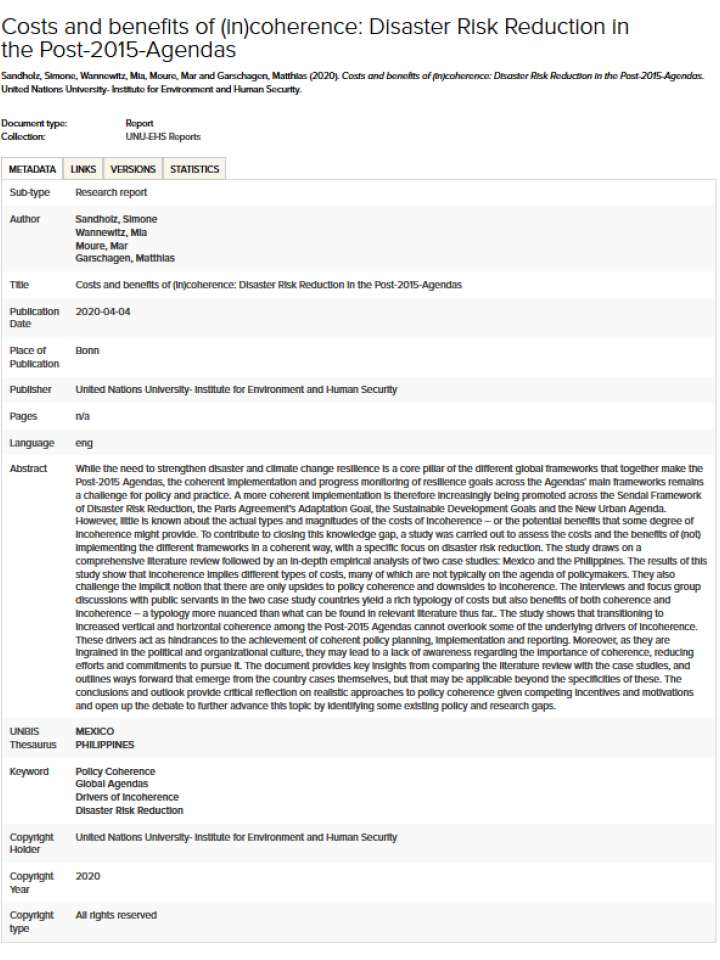Costs and benefits of (in)coherence: Disaster Risk Reduction in the post-2015-agendas
While the need to strengthen disaster and climate change resilience is a core pillar of the different global frameworks that together make the Post-2015 Agendas, the coherent implementation and progress monitoring of resilience goals across the Agendas' main frameworks remains a challenge for policy and practice. A more coherent implementation is therefore increasingly being promoted across the Sendai Framework of Disaster Risk Reduction, the Paris Agreement’s Adaptation Goal, the Sustainable Development Goals and the New Urban Agenda.
However, little is known about the actual types and magnitudes of the costs of incoherence – or the potential benefits that some degree of incoherence might provide. To contribute to closing this knowledge gap, a study was carried out to assess the costs and the benefits of (not) implementing the different frameworks in a coherent way, with a specific focus on disaster risk reduction. The study draws on a comprehensive literature review followed by an in-depth empirical analysis of two case studies: Mexico and the Philippines.
Key conclusions are:
1. Policy formulation and implementation for disaster risk reduction, climate change adaptation and overall development is still often happening in an incoherent and siloed manner despite the fact that coherent approaches have been postulated for years.
2. This incoherence implies different types of costs, many of which are not currently on the agenda of policymakers.
3. But in many respects incoherence does not emerge randomly or accidentally; rather, distinct drivers of incoherence are at play which need to be understood in order to enable coherence-building.
4. In some respects, incoherence even brings benefits to policy processes and outcomes, particularly in the short term. Finding substitutes for these benefits is an essential ingredient to coherence-building.
5. Despite initial benefits of incoherence in many policy processes, the long-term costs of incoherence are far higher, making the case for coherence-building but also highlighting the difficulties of taking the first steps in this direction.
Explore further
